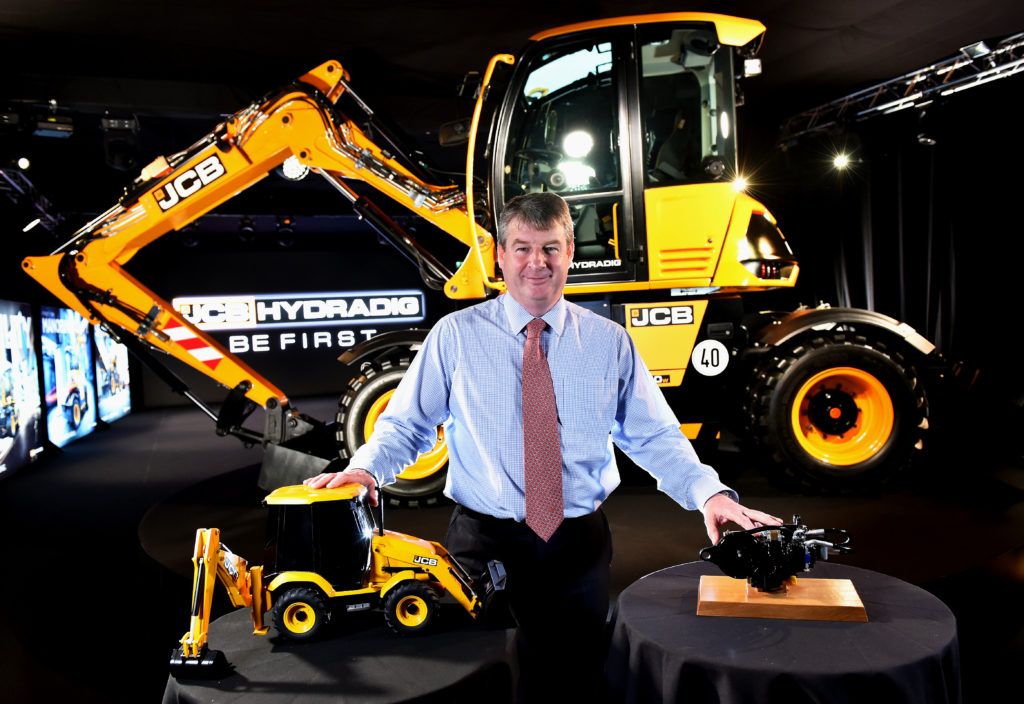Steve Richmond, director logistics systems at Jungheinrich, explains that instead of completely overhauling your current setup, the key to successful automation is a staggered approach
As consumer demands and expectations increase and supply chains become more complex, businesses are increasingly turning to automation in order to generate more efficiencies and value from their warehouses and processes. Recent research has found that almost two thirds (64%) of participants believe that warehouses will be ‘smart connected’ within five years, with humans still playing some part in processes. This is especially important during times of economic instability, as automation can provide a solid foundation to support business strategy during times of uncertainty.
However, in order to embrace the connected warehouse to its full potential, businesses need to understand that technology is just one part of the overall answer.
A collaborative approach
For many companies, collaboration is a key component of their automation projects. However, this collaborative approach is more than plugging different systems together, it is about combining people, process and technology together to achieve common goals. To enable a truly seamless and effective collaborative intralogistics model, companies must create a highly motivated and skilled workforce who are willing to embrace these new opportunities.
To achieve the best results and value from automation, companies need to be clear and concise about the specific business objectives they aim to meet, as well as having their customer expectations and emerging technology solutions in mind. Moreover, automation can not only support businesses in unlocking value from the supply chain, but in turbulent economic times, such as Brexit or the current Coronavirus crisis, can also enable a safety net strategy, supporting organisations with overall business aims, despite experiencing challenges such as staff shortages.
Gradual implementation of automation
Too often businesses think they need to jump in at the deep end and deploy full automation technology straight away. But full automation isn’t necessarily an appropriate strategy; there is no need to revolutionise the entire facility to achieve significant efficiency and productivity improvements.
The right advice is key – jumping in too deep, too soon could mean that stakeholders are not fully bought into the solution from the start. Instead, working in tandem with a consultant that can inspire collaborative working with the workforce and key stakeholders – deploying the right technology and processes, for the right departments, at the right time – can integrate automation seamlessly into the business and allow for the rewards to be rapidly realised.
By taking a hybrid approach to implementing automation, transitioning in stages will allow the workforce to gradually understand and become familiar with each stage of the automated process and enjoy the benefits. Whether it is a manual, semi-automated or full automated approach, it’s crucial for businesses to truly understand their end objective of automation in order to better determine the best approach to realising that goal.
Future-proofing your supply chain
In a rapidly evolving political and economic environment, unexpected business hurdles seem to crop up more regularly than ever before. From Brexit to the current Coronavirus pandemic, in times of unprecedented events which lead to much uncertainty for businesses, there is no better time for organisations to prepare by future-proofing their supply chains. To be successful in these rapidly changing environments, automation will play a key part in this transition.
Supply chains which are already under immense pressure caused by an incredibly turbulent environment will begin to show increased strain unless they rely on innovative technologies. Businesses should, therefore, ensure they have the processes and procedures in place to spot early signs of disruption and act upon these. We are already noticing an uptake in the use of innovative technology in the warehouse such as Automated Guided Vehicles. This type of automation plays a central role in how the industry faces future and current challenges, such as Brexit and Covid-19 which may lead to skill-shortages or restrictions in human touch, for example.
With potentially less staff available, organisations will need to have the flexibility in place to adapt to unprecedented events to keep their businesses stable. Even for smaller businesses, not only can part-automation unlock valuable efficiencies, but can also act as a safety net for an organisation to help see the company through turbulent economic times where a lack of staff could have significant knock-on effects. For example, if the government’s planned legislation to limit visas for ‘low skilled’ workers goes through, the consequences for many businesses could be severe. Deploying a level of automation now could go a long way to alleviating the concerns of the future.
Embracing industry 4.0
Industry 4.0 is compelling for many reasons. Businesses in all sectors are finding new, innovative and cost-effective ways to better their processes. We’ve seen an increase in technologies such as the Internet of Things (IoT), Artificial Intelligence (AI) and Automated Guided Vehicles (AGV) where companies are beginning to embrace automation. The idea of creating a smart and connected warehouse is a transformation many are eager to undergo, however, it is important to remember that you cannot achieve these results with technology by itself.
By considering both the processes and the people who operate the processes, organisations can take a far more intelligent approach to automation. Problems will arise when implementing Industry 4.0 unless businesses get their processes aligned and truly understand the goal of their automation investment. If managed properly, the true value and potential of automation can be unlocked rapidly, helping take businesses to the next level.





